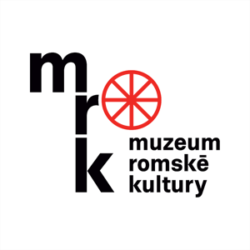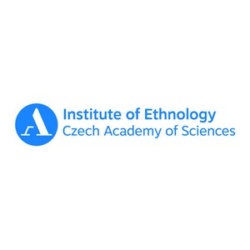Milena Hübschmannová (ed.): „Po židoch cigáni.“ Svědectví Romů ze Slovenska 1939–1945 ("After the Jews, the gypsies." Testimonies of Roma from Slovakia 1939-1945)
Published by Triáda publishing house, Prague 2005.
You can buy the book here.
This book – the first volume of a collection of Slovak Roma memories of World War II – has as its title the slogan of the Hlinka Guards at that time, "Po židoch cigáni"( "After the Jews, the Gypsies"). With a foreword by Milena Hübschmannová, it contains a historical outline of the persecution of the Roma in European countries and in what was then the Soviet Union under Nazism, and discusses the situation in Slovakia in 1939-1945 in greater detail; it also explains the procedure for collecting and editing individual testimonies, comments on the use of the terms Rom/Cikán/cikán, the language used in communication, the translation of the testimonies into Czech, and the transcription of the Romani language. Jana Kramářová's contribution then recaps the efforts to compensate Romani victims of Nazism.
The following more than sixty testimonies by Slovak survivors about life from 1939 to August 1944 are divided into six thematic sections entitled “Ghettoization and Ostracization of Roma”, “Roma in the Army”, “Roma in labour camps”, “Roma beyond the South Moravian border”, “Relations between Roma and Jews in the villages of Eastern Slovakia before World War II and the impact of the genocide of the Jews on the Roma”, “Roma in the partisan movement and in the Slovak National Uprising”. The individual testimonies are published in Czech translation; if the original language was Romani, the text in Romani follows (if it wasin Hungarian, , for example, only the Czech translation is printed). The book concludes with a pictorial supplement and a section entitled Appendix, which provides information about the state of preparation of the second volume of the publication after the death of the editor and gives its detailed contents; it also includes a name index, a local index, and a profile of the editor.
The testimonies were recorded in various localities in Slovakia from the 1970s to 2000, first on the personal initiative of Milena Hübschmannová (1933-2005), later by students of her course in Romani at the Language School in Prague, and after 1989 also by students of the new field of Romani studies at Charles University in Prague.
The language of communication in most of the interviews was Slovak Romani (the north-central dialect of Romani) or Hungarian Romani (the south-central dialect of Romani), and to a lesser extent Slovak, which was preferred by some of the witnesses; for two of the witnesses, one native Czech and one Moravian Roma, the preferred language was Czech. The testimonies of the Vlach Roma and Sinti (from the Czech Republic and the Slovak Republic) were not taped. Almost all interviews were conducted in the home environment of the survivor in the presence of one or more interviewers, family members (including children), and sometimes friends or random visitors. Some of the interviewees were friends of the interviewers - these texts using informal forms of address were arose from repeated visits at different intervals.





